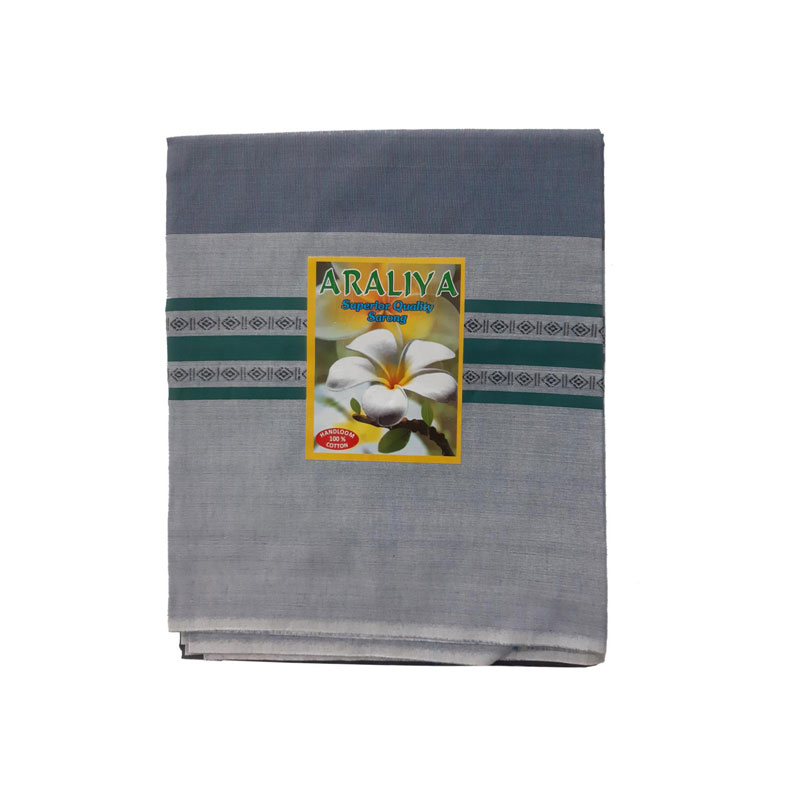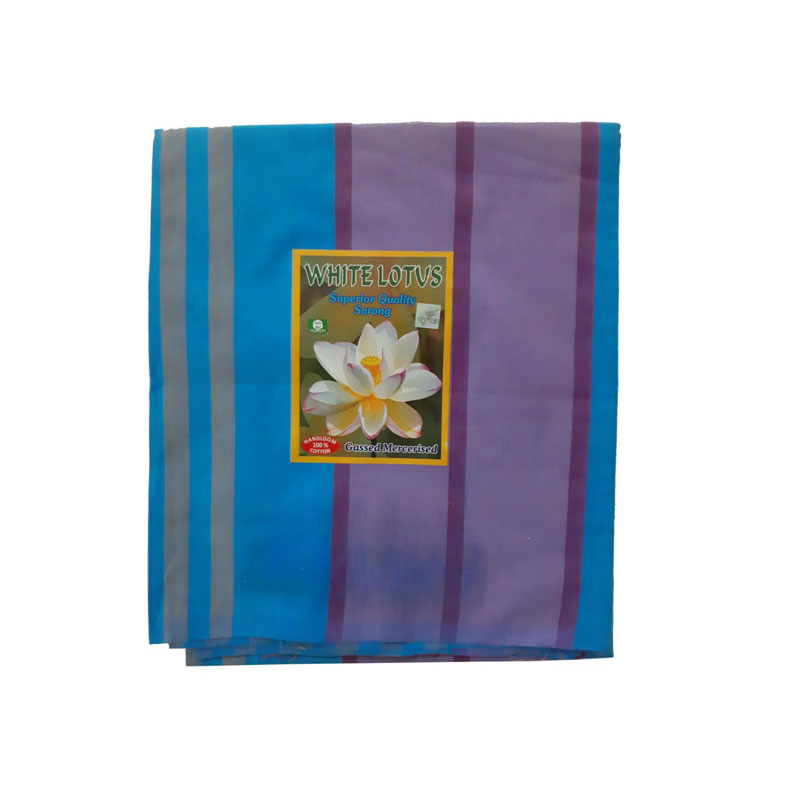Classic Exports
SRILANKA SARONG (LUNGI)
A sarong or sarung (/səˈrɒŋ/); is a large tube or length of fabric, often wrapped around the waist, worn in Southeast Asia, Southern Asia, Western Asia, Northern Africa, East Africa,[1] and on many Pacific islands. The fabric often has woven plaid or checkered patterns, or may be brightly colored by means of batik or ikat dyeing. Many modern sarongs have printed designs, often depicting animals or plants. Different types of sarongs are worn in different places in the world, notably, the lungi in the Indian subcontinent and the izaar in the Arabian Peninsula.
Sarong or sarung denotes the lower garment worn by Southeast Asian men and women. This consists of a length of fabric about a yard (0.91 m) wide and two-and-a-half yards (2.3 m) long. In the center of this sheet, across the narrower width, a panel of contrasting color or pattern about one foot wide is woven or dyed into the fabric, which is known as the kepala or “head” of the sarong. This sheet is stitched at the narrower edges to form a tube. One steps into this tube, brings the upper edge above the level of the navel (the hem should be level with the ankles), positions the kepala at the center of the back, and folds in the excess fabric from both sides to the front center, where they overlap and secures the sarong by rolling the upper hem down over itself. Malay men wear sarongs woven in a check pattern, while women wear sarongs dyed in the batik method. However, in Javanese culture, the wearing of batik sarong is so common and not restricted to some particular gender, sometimes it is also used in formal occasions such as weddings.
The sarong is common wear for women, in formal settings with a kebaya blouse. Malay men wear sarongs in public only when attending Friday prayers at the mosque,[citation needed] but sarongs remain very common casual wear at home for men of all ethnicities and religions in Brunei, Indonesia, Philippines, Malaysia, Singapore, Sri Lanka, and much of the Indian subcontinent[3] (In the Indian subcontinent, excluding Sri Lanka, sarongs are sometimes known as mundu or lungi).
Sarongs known under a variety of local names are traditionally worn by the people of Yemen and elsewhere on the Arabian Peninsula. Local names for the garment include fūṭah, izaar, wizār and maʿwaz (pl. maʿāwiz). In Hadhramawt sarong is called ṣārūn in the interior and ṣārūm in the coastal region. In Oman, sarongs are called wizār and are often white in color, similar to the Keralan mundu of the Indian subcontinent and it is usually worn under the Thawb. In Saudi Arabia, sarongs are known as izaar. Designs can be checkered or striped as well floral or arabesque, but double plaid (i.e., a vertical section of the izār with a different plaid pattern) designs from Indonesia are also very popular. In southwestern Saudi Arabia, tribal groups have their own style of unstitched izaar, which is locally woven. This is also worn in northern Yemen. However, the tribal groups in Yemen each have their own design for their fūṭah, the latter of which may include tassels and fringes. It is thought that this tribal futah resembles the original izaar as worn on the Arabian Peninsula since pre-Islamic times such as the Shendyt. They are generally worn open and unstitched in such a way that the garment does not reach over one’s ankles. Other izaars, often imported from Bangladesh, are the traditional clothing of Arab fishermen of the Persian Gulf, the Indian Ocean and the Red Sea. It was the traditional garment for men before the introduction of pant-like pajamas and kaftans during the Turkish and European colonial periods. Tube-stitched, as well as open sarongs, are both worn, even informal dishdasha-wearing countries, as casual sleepwear and at home.
Sarongs, very similar to those of South-East Asia and completely different from the Indian subcontinent (excluding Sri Lanka) are widespread – in the state of Manipur, where they are called Phanek and Mekhela in Assam which are very similar to traditional attires of other South-East Asian nations. In the South Indian states of Kerala, where they are called mundu (if fully white or fully black) and lungi or kaili if coloured, and Tamil Nadu, where they are called kaili or saaram or vetti or lungi and are usually worn at home. A standard lungi measures 2.12 by 1.2 metres.
Unlike the brightly colored Southeast Asian sarongs, the Kerala variety (the mundu) is more often plain white and is worn for ceremonial or religious purposes. In Kerala, the brightly coloured sarongs are called kaily and the white ones are called mundu. The more formal, all-white dhoti is worn for formal and religious occasions. While there are dresses based on the mundu which can be worn by women, they more commonly wear the sari.







